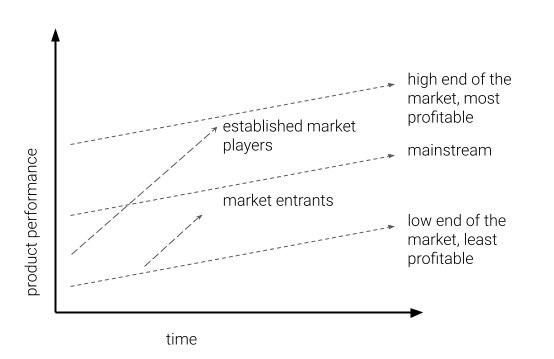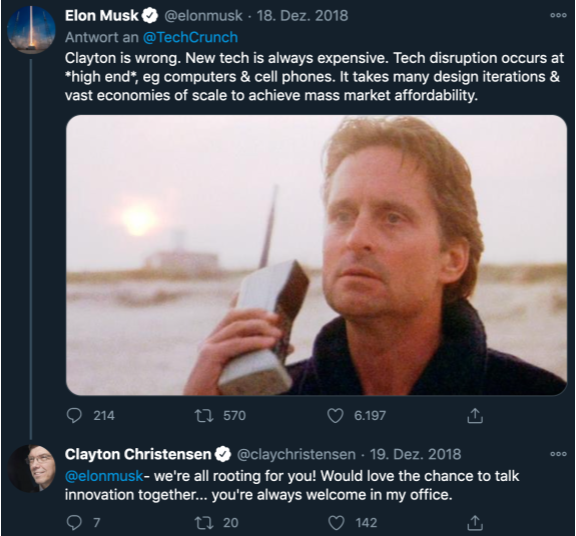
External Innovations – Why it is Crucial to Collaborate with Startups
September 10, 2020
Open Innovation Software – Buzzword or Real Added Value?
June 29, 2021The Usage of the Term Disruption in Business
When working in an innovation related field, the term disruption is quite frequently used. It usually occurs in relation with disruptive startups. Oftentimes you are warned of innovation that will disrupt your own business. Schimpf 2019 sees an inflationary use of the term disruption. It seems to be in vogue. Everybody is talking about it.Let's take a closer look! What's behind this term?
The Management Theory Disruptive Innovation
The term Disruptive Innovation goes back to the work of Bower und Christensen (1995): „Disruptive Technologies: Catching the Wave“. The article explains a model that states: a company tends, due to incremental innovation, to create an even better and more expensive product over time. As a result, the company at a certain point surpasses the needs of the mainstream and hence, reaches the top customer segment.By doing that, the company leaves a gap in the lowest customer segment. This space is filled by new market entrants. They start to “disrupt” existing market players with new, functional and oftentimes cheaper technologies. These disruptors then move up the market due to performance improvements. Finally, they reach the top customer segment themselves. Now, they are endangered to be disrupted as well (Bower und Christensen, 1995).

Figure 1: The Disruptive Innovation Model (Christensen, Raynor, McDonald, 2015)
In an Interview Christensen names Toyota as an example for this model. Continuous product improvements made it possible for companies like Hyundai or Kia to enter the lowest customer segment with cheap offerings. But now, as they are developing towards a premium company themselves, one can observe the same phenomenon with the chinese manufacturer CHERY. (YouTube: Disruptive Innovation Explained)
In the Debate: Disruptive Innovation
So, is the theory today still appropriate to categorise startups as disruptive? This is a controversial issue in business practice.Christensen (2015) therefore widens his successful management theory, explaining that not only those are disruptors who enter the low end of the customer segment, but also those companies who have a significantly different business model, compared to established firms (Christensen et al., 2015). However, opponents of the theory in return contradict, that the theory overall focusses on linear business models and can not explain platform- or community-based business models, such as Uber. [1]

An interesting debate on that topic took place on twitter, when Elon Musk accused Christensen to be wrong with his theory.
Musk justifies his statement by explaining that tech-innovation always enters the market at the top customer segment and reaches the mainstream via economies of scale. [2]
Figure 2: Twitter-criticism of the Disruptive-Innovation-theory (Source: Twitter).
Todays Relevance and Importance
In summary, Disruptive Innovation stands for an important management theorie. Even though it is in controversial debate and was further developed over the past years, for managers it is important to know its meaning.Market entrants and innovation have to be categorized properly, in order to create a good strategy. [3]
References
Schimpf, S. (2019). Praxis Disruption. Wie Unternehmen potenziell disruptive Technologien erkennen, bewerten, entwickeln und umsetzen. Fraunhofer-Gesellschaft.Bower, J. L., & Christensen, C. M. (1995). Disruptive Technologies: Catching the Wave. Harvard Business Review. 73 (1), 43–53.
Christensen, C. M., Raynor, M. E., & McDonald, R. (2015). What is disruptive innovation. Harvard business review, 93(12), 44–53.




